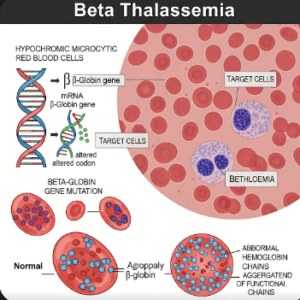Overview
Blue sclera is a condition in which the normally white part of the eye, the sclera, appears bluish or grayish. This occurs when the underlying connective tissue is thinner than normal, allowing the blue hue of the underlying choroid to show through. While blue sclera can sometimes be a benign hereditary trait, it may also indicate underlying medical conditions, including connective tissue disorders or metabolic diseases.
In South Korea, ophthalmology clinics and specialized hospitals provide comprehensive evaluation and diagnosis, helping patients determine whether blue sclera is harmless or linked to a systemic condition.
Key Facts
Highlights:
➡️ Blue sclera is most noticeable in the whites of the eyes, particularly in the corners or entire scleral surface.
➡️ It may be present at birth or develop later in life, depending on the cause.
➡️ Common associations include genetic disorders such as osteogenesis imperfecta or Ehlers-Danlos syndrome.
➡️ Other systemic conditions, including iron deficiency anemia and connective tissue diseases, may present with blue sclera.
➡️ South Korea offers advanced ophthalmology and genetic testing services for proper evaluation.
What is Blue Sclera?
Blue sclera is the bluish discoloration of the sclera due to reduced collagen thickness or transparency of scleral tissue. The blue color results from light scattering and visibility of the underlying uveal tissue.
Characteristics include:
- Bluish or grayish appearance of one or both eyes
- May be uniform or patchy
- Often associated with thin or fragile sclera
- Can be a marker of underlying genetic or metabolic disorders
- May occur in isolation or with other systemic symptoms
Blue sclera itself does not impair vision, but the underlying cause may require treatment.
What Symptoms are Related to Blue Sclera?
Symptoms may vary depending on whether the condition is isolated or part of a systemic disorder:
- Noticeable bluish hue of the eye whites
- Thin, fragile sclera that may be prone to injury
- Associated features if linked to systemic disease:
- Bone fragility or frequent fractures (osteogenesis imperfecta)
- Joint hypermobility or hyperextensible skin (Ehlers-Danlos syndrome)
- Hearing loss in certain connective tissue disorders
- Dental abnormalities or delayed development in genetic syndromes
Highlights:
➡️ Blue sclera itself is typically asymptomatic regarding vision.
➡️ Associated systemic symptoms may require multidisciplinary care.
What Causes / Possible Causes of Blue Sclera?
Highlights:
➡️ Osteogenesis Imperfecta: Genetic disorder causing brittle bones and thin sclera.
➡️ Ehlers-Danlos Syndrome: Connective tissue disorder leading to fragile sclera and hypermobile joints.
➡️ Iron Deficiency Anemia: Severe anemia can occasionally cause a bluish tint in the sclera.
➡️ Marfan Syndrome: Connective tissue disorder affecting eyes, heart, and skeleton.
➡️ Long-Term Steroid Use or Medications: Rarely can cause scleral thinning.
➡️ Congenital Variants: Some people inherit naturally thinner sclera without systemic disease.
➡️ Other Metabolic or Genetic Conditions: Rare disorders affecting collagen or connective tissue.
When Should I See My Doctor?
Highlights:
➡️ If blue sclera appears suddenly or is accompanied by eye pain or vision changes.
➡️ If there are recurrent fractures, joint hypermobility, or delayed development, suggesting systemic disease.
➡️ For evaluation of potential genetic disorders, especially if family history is positive.
➡️ If associated with other systemic symptoms, such as hearing loss or cardiovascular anomalies.
➡️ Early consultation helps identify underlying conditions and guides appropriate management.
Care and Treatment
Management depends on the underlying cause of blue sclera:
Highlights:
➡️ Ophthalmologic Monitoring: Regular eye check-ups to assess scleral integrity and prevent complications.
➡️ Genetic Counseling: Recommended for hereditary connective tissue disorders.
➡️ Treatment of Underlying Disorders:
- Osteogenesis imperfecta: Bone-strengthening medications, physical therapy, and fracture management.
- Ehlers-Danlos syndrome: Joint protection, physiotherapy, and cardiovascular monitoring.
- Iron deficiency anemia: Dietary supplementation and correction of underlying causes.
➡️ Protective Measures: Sunglasses or eye protection to reduce risk of trauma to thin sclera.
➡️ Patient Education: Awareness of potential systemic complications and early signs to watch for.
➡️ Multidisciplinary Approach: Collaboration among ophthalmologists, geneticists, orthopedists, and pediatricians if systemic disorder is present.
Treatment Options in Korea
South Korea provides advanced ophthalmology and genetic care for blue sclera and associated conditions:
Highlights:
➡️ Ophthalmology Clinics: Comprehensive eye exams, imaging, and monitoring for scleral thinning.
➡️ Genetic Testing Centers: Identification of hereditary connective tissue disorders.
➡️ Orthopedic Services: Management of bone fragility and prevention of fractures in osteogenesis imperfecta.
➡️ Multidisciplinary Care: Coordination among ophthalmologists, geneticists, cardiologists, and physiotherapists.
➡️ Preventive Care: Guidance on eye protection, safe exercise, and early detection of complications.
➡️ Patient Education Programs: Information for families about hereditary risks and management strategies.
➡️ Medical Tourism Support: Multilingual consultations and structured evaluation for international patients.













